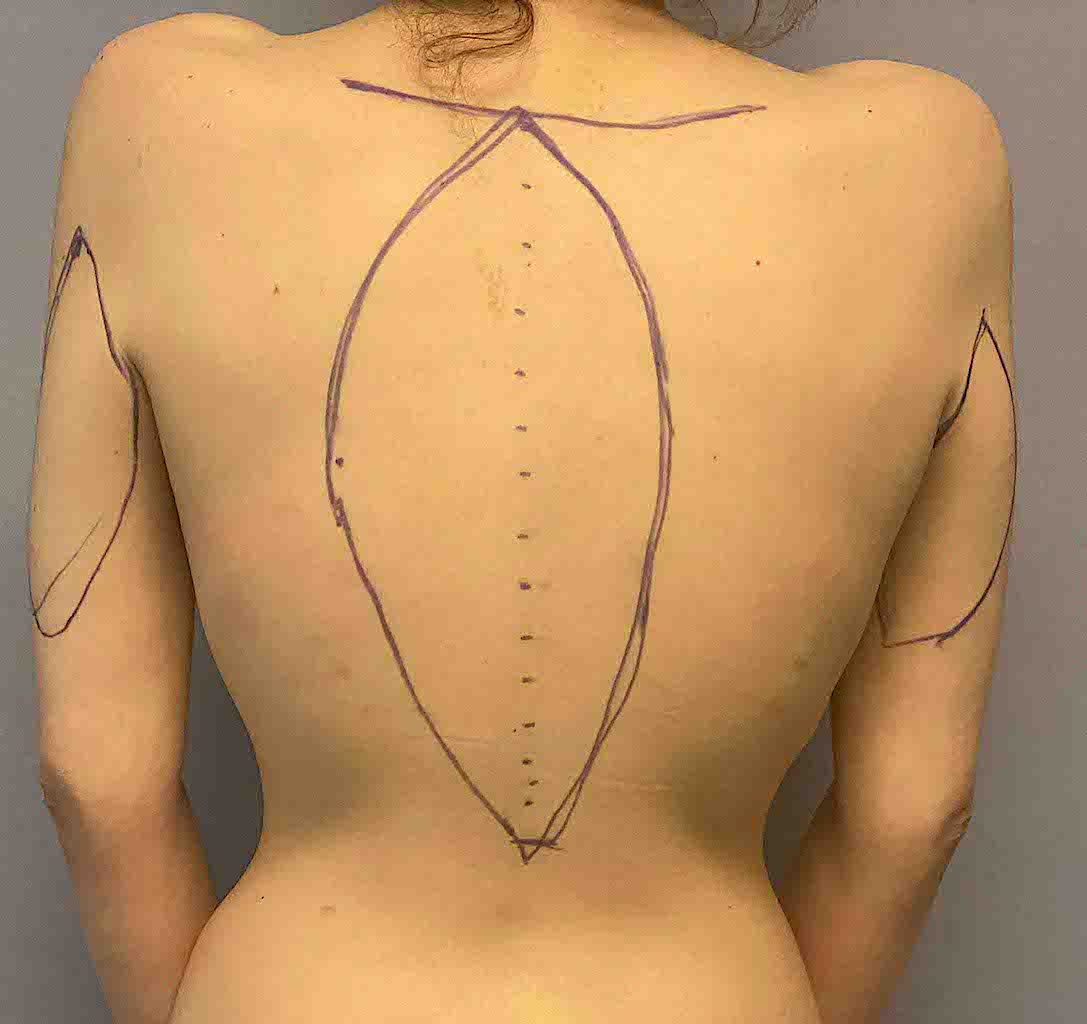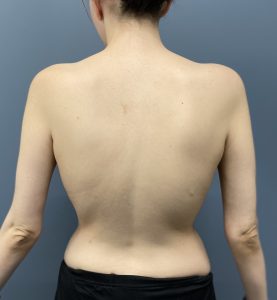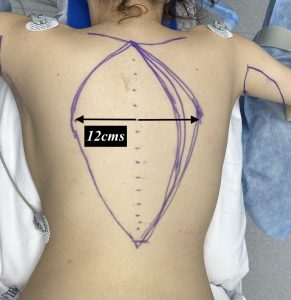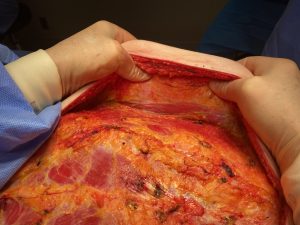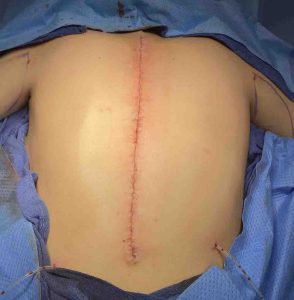Background: The most commonly performed body tightening procedure by excision is the tummy tuck. Through a horizontally oriented excision of skin and fat the abdomen or lower anterior/ventral torso is tightened horizontally in the direction of the excision. As part of that procedure the vertically oriented rectus muscle/fascia is also tightened creating a bidirectional tightening/narrowing effect.
While there are numerous other excisional body procedures for removing loose skin due to weight loss, there are no other known torso modifying procedures that use the same concepts of loose skin excision and underlying muscle tightening as in a tummy tuck. One novel torso tightening procedure that fulfills these criteria is the vertical backlift. This unique surgery involves a vertically oriented excision of skin and fat from the back in which the closure creates a linear scar in the midline over the spine. This pulls the sides of the torso inward creating a body narrowing or cinching effect.
In addition to the elliptical skin and fat excision the wide open exposure allows for the latissimus dorsi muscle to be plicated medially onto itself along its length from the waistline up to the shoulder blade. Since the lateral edge of the latissimus dorsi muscle sits right under the skin on the side of the torso it contributes to its width. Muscle plication adds to what the medial skin movement provides, amplifying the torso cinching effect.


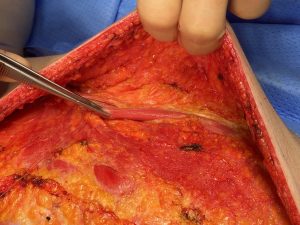
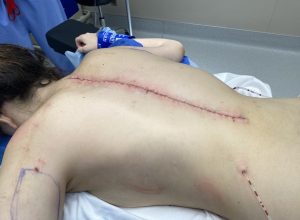
The vertical backlift creates a long midline scar down the center of the back. But its benefits are unparalleled when it comes to a body narrowing/tightening effect. The inward pull from the skin excision is significant and the muscle plication adds to its benefits. This is very much like a corset which pulls the sides inward. While it is obviously not for everyone who desires a more narrow torso. But for those who have a lot of loose skin (particularly after weight loss or liposuction) and can tolerate s long scar down the center of the back this creates a torso narrowing effect that no other surgical procedure or device can come close to creating. It is a tummy tuck put on its side and moved to the back. I originally did the procedure as an extreme form of rib removal surgery due to wide access to the lower ribs in patients with loose back skin. But as shown in this patient it can be done as an isolated procedure without rib removal in someone where the problem is not really the waistline but the width of the back above it.
Case Highlights:
1) Loose skin on the back, usually from some amount of weight loss, often results in a wider appearance to the torso.
2) The vertical backlift or torso cinch procedure provides a very effective horizontal tightening/narrowing effect.
3) The amount of skin that can be removed from the back through an elliptical excision allows for latissimus dorsi muscle plication which adds to the torso narrowing effect.
Dr. Barry Eppley
World-Renowned Plastic Surgeon

